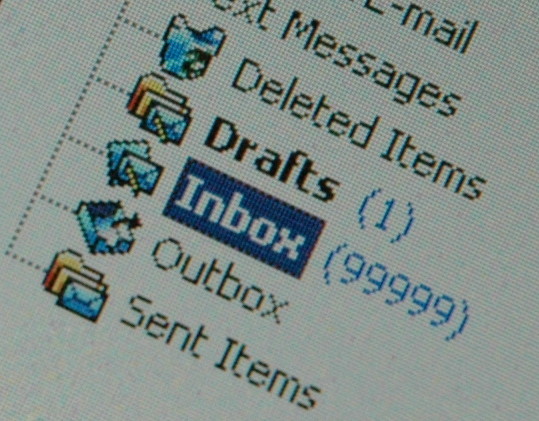
Image source: Jason Rogers via Flickr
An analysis of almost 27,000 email pitches to journalists and editors has uncovered details of successful and unsuccessful methods, including what words win journalists’ attention. Some findings support common best practices; others might not.
The marketing and PR agency Fractl analyzed 26,988 pitches it emailed between October 2014 and May 2016 to determine what separates successful from unsuccessful media pitches. It defined pitches as successful if the writer or editor responded to them, not whether they eventually produced media coverage. That metric best isolates the effectiveness of a pitch, since the publication may decline to publish for any number of reasons.
Almost two-thirds of journalists and editors decide to open an email based on the subject line, according to the analysis. Words such as “know,” “changed,” and “show” were more successful since they immediately highlighted what was interesting about the content.
Rule #1: Write subject lines that grab attention with “newsy” words.
Terms like “content,” “marketing,” “house,” “travelers,” and “body” were instrumental in targeting the publication’s vertical. In a Fractl survey, 60% of journalists said good subject lines tailored to their beat are essential for gaining their attention.
Rule #2: Tailor the subject line and pitch to each journalist’s publication and beat.
Tailoring the pitch to a publication’s geographic area improves success rates. Subject lines with “UK” saw higher than average success. Be specific when referring to geographic area. Instead of referring to “states,” cite a specific state or states.
Rule #3: Localize the pitch
Subject lines with the word “size” were often successful. Most referred to sex directly or obliquely through innuendo. Another previous Fractl survey indicated that 60% of people are receptive to humor. The tactic can backfire, however. Avoid it if the email recipient seems conservative, the researchers warns.
Numbers may not help. Numbers in the subject line didn’t improve success rates of pitches.
Frequently used words in subject lines associated with low success rates include: interactive, state, U.S., data and video. The lesson: Highlight the content, not the format. While publishers like exciting charts and graphs, they consider them secondary.
Rule #4: Avoid buzzwords and type of format
Words in the email body associated with higher success rates include: “happy,” “hope,” “loved,” ”great,” “week” and “weekend.” Polite, positive, personable introductions help. In subject lines, every word counts. But in pitch introductions, writers don’t mind politeness, as in “I hope you had a great weekend,” or “I hope you’re feeling better.” Personally, I dislike that opening. It’s too associated with spam email. I much prefer “[Name of Publication] may be interested in….”
Rule #5: Be personable and authentic.
Pitch introductions with the word “game” had the lowest success rate by far. “Sports writers are probably not interested in your generic comments about “last night’s game.” When pitching sports writers, you may have to work a little harder to attract their attention,” according to Fractl.
Other unsuccessful words include “hard” and “shocked.” The lesson: Focusing on negatives by saying you are “shocked” or that something is “hard to believe” is ineffective.
Other Successful Elements
Other media experts emphasize the importance of including visuals and data and offering exclusives. Research shows that press releases with video attract more attention. In a test by Business Wire, Get City Dealz, a PR and SEO agency, found that press releases with video attracted 55.4% more views and 6.1% more clicks than text-only releases.
Rule #6: Include visuals (but don’t feature them).
Some PR pros say offering exclusives can produce media interest. Exclusives are especially valuable for tech PR product announcements and other breaking news stories. “If you can find the right outlet and build the right relationship upfront, and deliver a well packaged pitch with a coherent assemblage of details and relevant data, you might get more mileage for your story with an industry exclusive,” says Juliet Travis of the PR firm, Travis Communications, in an article for Muck Rack.
Rule #7: Offer exclusives to influential sources.
Others say data increases credibility. “Whenever possible, quantify the impact and importance of your story. Share anecdotal data from your own company, or curate industry data from reputable sources,” argues marketer and entrepreneur Ritika Puri in a BuzzStream guest post.
Rule #8: Include well-vetted supporting data in the content.
Bottom Line: An analysis of almost 27,000 email pitches provides valuable insights into how to write subject lines and email introductions that win attention. The research largely confirms what media relations experts espouse, while some of its details on particularly successful words may be surprising and beneficial.
William J. Comcowich founded and served as CEO of CyberAlert LLC, the predecessor of Glean.info. He is currently serving as Interim CEO and member of the Board of Directors. Glean.info provides customized media monitoring, media measurement and analytics solutions across all types of traditional and social media.




